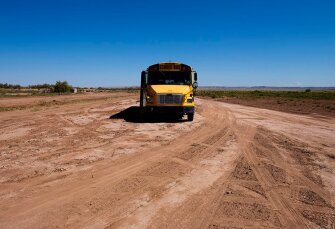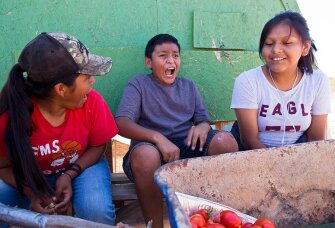
Nick Cote describes his experiences photographing a school on the Navajo Nation in Northern Arizona that integrates cultural experiences, such as working with local farmers, with students’ academic studies to nurture the necessary skills, and motivation to attend college.
In the event of a zombie apocalypse, the students at the STAR School in northern Arizona would be relatively well-off. The K-8 charter school, which lies just outside the boundary of the Navajo Nation and about 30 miles from Flagstaff, is completely off the grid. The school has its own water well, and electricity is provided by solar panels. Students work with local farmers to grow enough organic vegetables to stock the cafeteria’s salad bar twice each day to feed 150 people.
As I photographed students working on a nearby farm, it was clear that all were enjoying the work. While the teachers and farmers did most of the heavy lifting, the students did their fair share of the work. On this particular day they were harvesting tomatoes and chiles, and daring each other to eat the latter was the afternoon pastime. While most schoolchildren spend most of their time indoors, these kids go on field trips each week to learn firsthand how their ancestors thrived in the desert.
If the school were located in a less remote area, organic vegetables and greenhouses on campus would be a novelty, but “food sovereignty,” as the school’s CEO Mark W. Sorensen calls it, is a necessity. In an area the size of West Virginia with about 300,000 people, there are only 10 grocery stores, he tells me. There are convenience stores in some remote areas, but they mostly sell junk food. The Navajo have been farming the desert for centuries and the school’s curriculum taps into the knowledge of the local farming community. Not only do the students take pride in growing their own food, they even claim to love kale.













